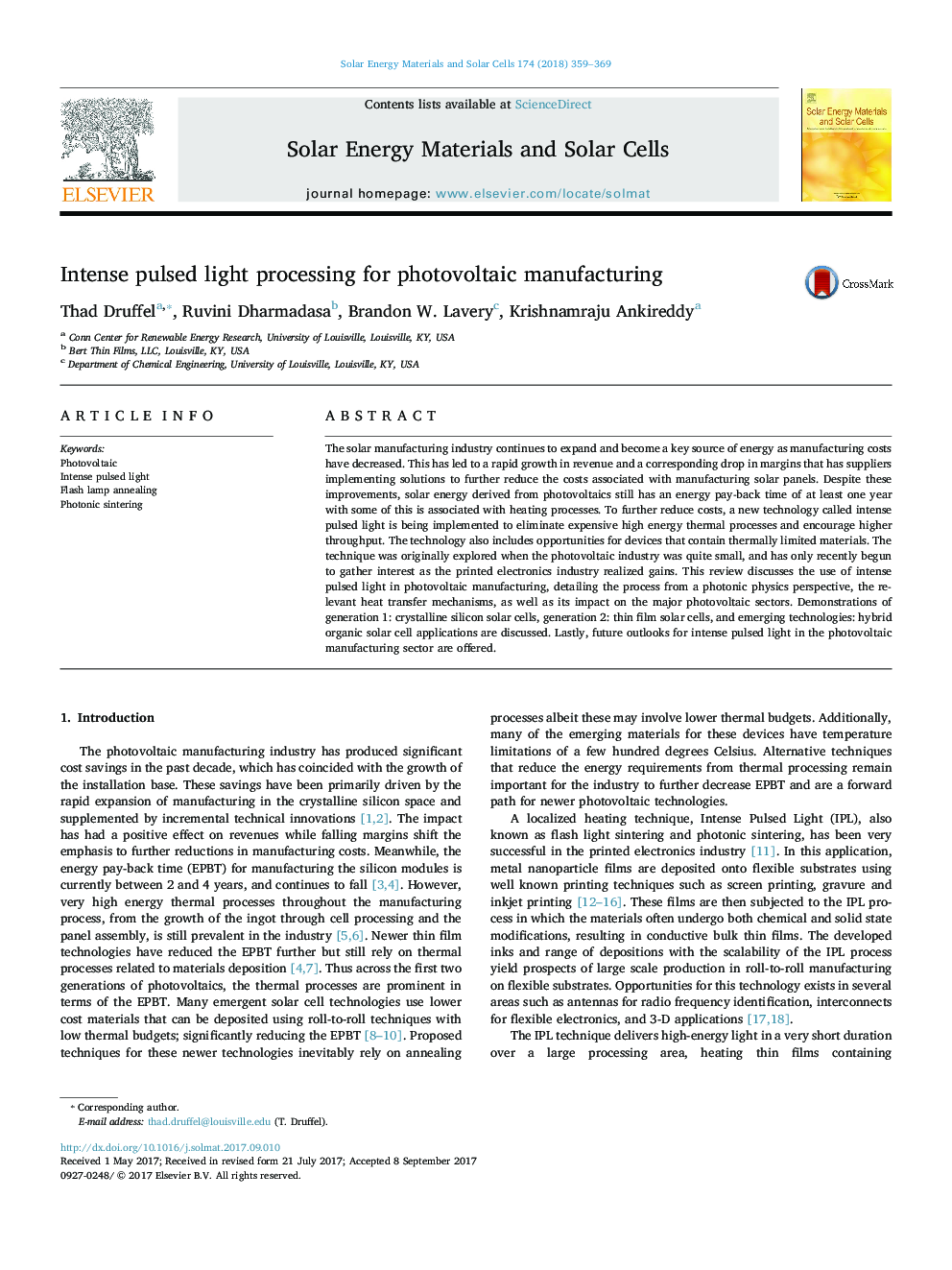| Article ID | Journal | Published Year | Pages | File Type |
|---|---|---|---|---|
| 6456693 | Solar Energy Materials and Solar Cells | 2018 | 11 Pages |
The solar manufacturing industry continues to expand and become a key source of energy as manufacturing costs have decreased. This has led to a rapid growth in revenue and a corresponding drop in margins that has suppliers implementing solutions to further reduce the costs associated with manufacturing solar panels. Despite these improvements, solar energy derived from photovoltaics still has an energy pay-back time of at least one year with some of this is associated with heating processes. To further reduce costs, a new technology called intense pulsed light is being implemented to eliminate expensive high energy thermal processes and encourage higher throughput. The technology also includes opportunities for devices that contain thermally limited materials. The technique was originally explored when the photovoltaic industry was quite small, and has only recently begun to gather interest as the printed electronics industry realized gains. This review discusses the use of intense pulsed light in photovoltaic manufacturing, detailing the process from a photonic physics perspective, the relevant heat transfer mechanisms, as well as its impact on the major photovoltaic sectors. Demonstrations of generation 1: crystalline silicon solar cells, generation 2: thin film solar cells, and emerging technologies: hybrid organic solar cell applications are discussed. Lastly, future outlooks for intense pulsed light in the photovoltaic manufacturing sector are offered.
Graphical abstractDownload high-res image (141KB)Download full-size image
